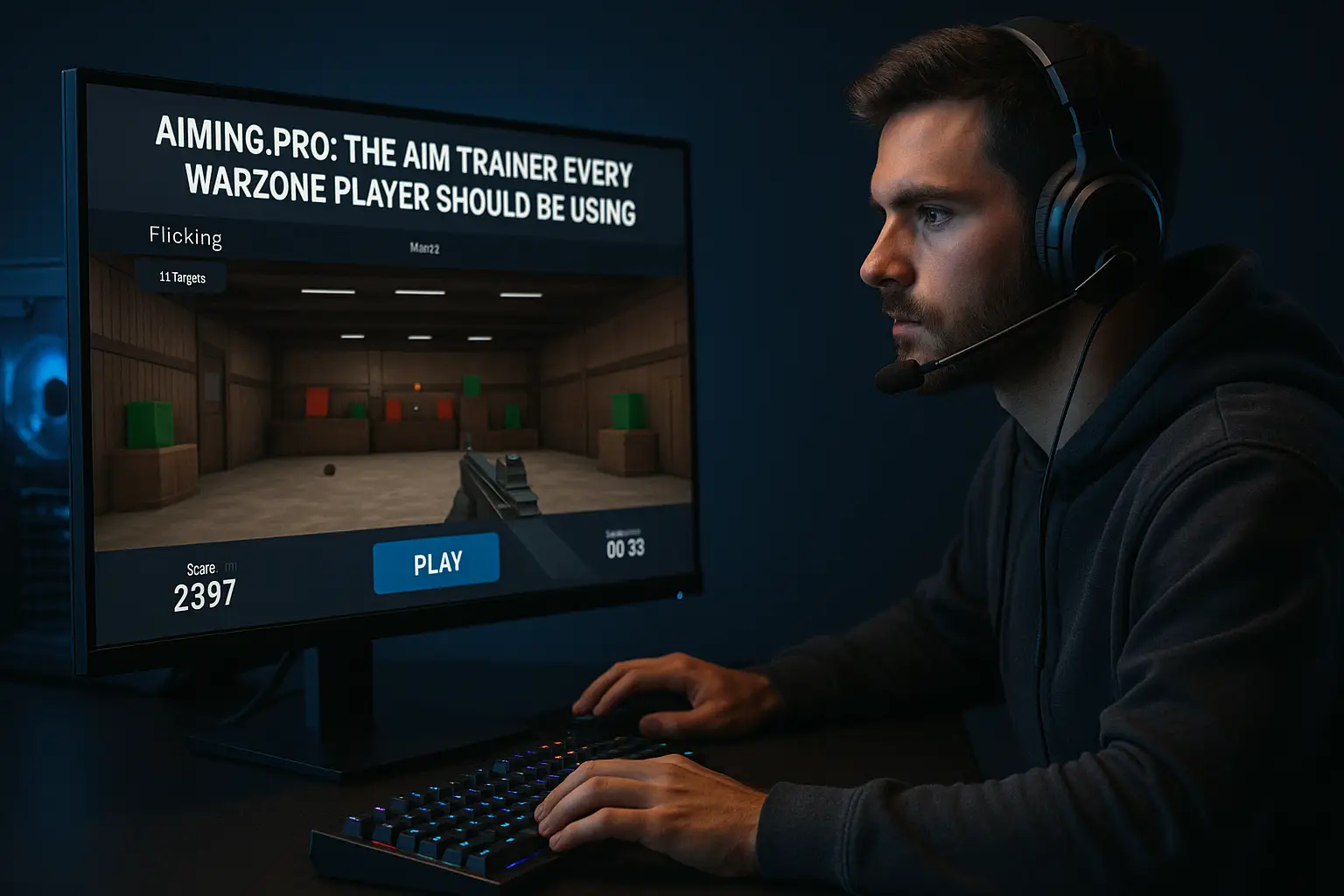
5 Tips to Master the Warzone COD Tactical Layout
Why Every Pro Player Uses the Tactical Layout in Warzone COD What Is the Tactical Layout and How Does It
As a parent of a young autistic child, I understand how challenging it can be to find activities that both support growth and bring joy. Over time, it became clear that the Nintendo DS was more than just a way for my son to pass the time. It has become a valuable tool for learning new skills, calming his mind, and inspiring creativity. Choosing the right games makes all the difference if you want the DS to be more than just a quick fix. I want to share some of the best DS games for autistic kids that teach and entertain—titles that have worked well for us by combining learning and fun.
Table of Contents
ToggleThe Nintendo DS is one of those devices that’s easy to hold, simple to use, and loaded with colorful options. My son gravitates toward activities that are predictable and visually interesting and let him control the pace. Many autistic kids feel the same way. Games with gentle repetition, calm environments, and clear feedback can support relaxation and skill-building.
I noticed that not every game had a positive effect. Fast-paced or noisy titles could frustrate him or disrupt our routines. But when I picked games designed for learning, social routines, motor skills, or emotional growth, screen time felt more meaningful. Sometimes, the right audio cues or calming visuals made all the difference between a tough afternoon and a moment of joy.
After some trial and error, here’s what I look for in a DS game for younger autistic kids:
Picking the right DS games isn’t about strict rules. I pay attention to how my child reacts and make changes if something feels overwhelming or too challenging. Flexibility is essential here. What works well for one week might need to be switched up the next if your child’s mood or interests change.
I’ve tested many DS games with my son, paying close attention to how each supports learning and joy. Here are my top recommendations for DS games that teach, entertain, and create positive routines for younger autistic kids. If you try any of these, check out free video demos to get a feel before buying.
Nintendogs: Responsibility, voice recognition, bonding. Kids care for a puppy: feeding, petting, and training. This game is excellent for building connections and routines.
Animal Crossing: Wild World: Routine, emotional regulation, decision making, a Relaxing world where your child can fish, collect items, and feel safe in a daily structure.
New Super Mario Bros: Reaction time, basic planning. Simple, fun, and colorful. Helps build timing, cause/effect, and motor skills.
Mario Kart DS: Coordination, turn-taking. It is a fun, low-stress racing game that improves hand-eye coordination and emotional control.
Kirby: Super Star Ultra. Exploration, problem-solving. Bright visuals, simple controls, and a gentle learning curve. Perfect for short, happy play sessions.
Yoshi Touch & Go: Stylus use, spatial awareness. It uses the touchscreen in a calming way. Kids draw paths for Yoshi to follow.
Crayola Treasure Adventures: Creativity, control, color learning. It is an art-based game where kids color and complete little creative challenges.
Go, Diego, Go! Safari Rescue: Animal learning, following directions. Based on the show. Perfect for kids who love animals and need structure.
Sesame Street: Elmo’s A-to-Zoo Adventure: Letters, early language. Educational game with voice instructions, made especially for younger kids.
I’ve seen the best results when I play with my child for at least a few minutes. Watching him play and commenting on what I see helps deepen the experience. I’ll ask questions or use moments from the game to spark real-world activities. For example, after feeding his virtual dog in Nintendogs, we treat our real dog. Or, after catching a butterfly in Animal Crossing, we might read a book about bugs together. Blending play with conversation helps him transfer what he learns in a game to daily life.
Short, clear sessions have worked well for us. My son would be happy if we set up a timer and talked through when play begins and ends. We usually keep game time between 1 hour and 30 minutes, once or twice daily.
Balance is super important, so we mix music, crafts, and outside play. Sometimes, after a DS session, we’ll walk or water the outside plants to keep the momentum going and avoid overstimulation.
Some games initially seem fantastic but are too loud, busy, or complicated. Games with unpredictable events usually don’t fit well for my son. I also check if games match his interests—he loves animals and coloring, so those themes work better than action-heavy or puzzle games that involve lots of trial and error.
Here’s what I keep in mind when trying something new:
Here’s a quick sample of how I tie learning and real-life activities with DS games:
Once my child feels comfortable, I start guiding him toward mastering basic skills through the games. Here are some tips that worked for us:
Try Simple Prompts
Ask your child questions while they play. For example, “What color did you use?” or “Which animal did you find?” This helps with language and making connections. Even if your child doesn’t answer out loud, describing what you see can model speech and vocabulary.
Mix Digital and Real World Play
Relate what happens in the game to things at home or school. If the game is about caring for pets, we talk about routines for feeding our animals. Practice real-life chores inspired by virtual activities.
Switch Roles
Sometimes, I’ll let my child be the “teacher” and explain what’s happening in the game. This supports confidence and social language. Letting him guide me through a level or teach me something new he discovered is fun.
Encourage gentle routines
By setting up regular DS playtimes and linking the themes to everyday life—like sharing, following instructions, or expressing feelings—kids can start recognizing patterns and skills that matter outside the screen.
How often should my autistic child use the DS?
Short, regular sessions of 15–30 minutes, once or twice a day, have worked well for us. It’s less about strict limits and more about balancing screen time with other activities. Watch your child’s energy and mood to decide what feels right. If they seem too wound up or tired after playing, try a shorter session or a gentler game next time.
Can video games help my child learn?
Many DS games support routine building, language, and hand-eye coordination skills. The learning goes even further when you talk about what they’re playing. The key is to treat games as tools for sparking imagination, not just passive entertainment.
What if my child gets frustrated or overstimulated?
If a game causes frustration or agitation, I remove it for a while and try something gentler. I also watch for patterns and avoid games that are too noisy or fast-paced. Taking regular breaks and listening to your child’s needs can help screen time stay positive for everyone.
Finding the best DS games for an autistic child comes down to knowing your child’s interests and needs. Celebrating small wins and staying flexible has helped us turn screen time into something we both look forward to. The most important thing I learned is to actively ask questions, join the fun, and use games as springboards for real-life activities. That way, the DS becomes so much more than just a toy. Remember, progress happens in small steps, so embrace every success and check out new games with curiosity as your child grows.
Thanks for reading Best DS Games For Autistic Kids That Teach & Entertain. If you liked it, read The Best Hand And Wrist Exercises For Gamers.
Ask Questions: If you have any questions, leave them in the comments below.

Why Every Pro Player Uses the Tactical Layout in Warzone COD What Is the Tactical Layout and How Does It

Best Aim Trainer for Warzone (Aiming.pro): Why Every Player Should Be Using It If you’re looking for the Best Aim

Warzone Sprint-to-Fire Delay Explained (Top 5 Secrets to Win More Fights in 2025) Field Brief: Understanding Warzone Sprint-to-Fire Delay “The